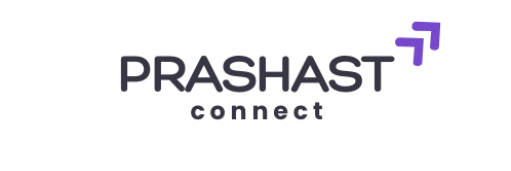How to Read Your Child’s Screening Report: A Comprehensive Guide
Understanding the Purpose of a Screening Report
The screening report is a vital tool designed to assess your child’s developmental progress and identify areas that may require additional support. Whether it’s for academic, social, or emotional development, understanding how to read your child’s screening report can empower you to make informed decisions about their growth.
Screening reports are typically conducted by educators, specialists, or healthcare professionals. They aim to provide a snapshot of your child’s abilities in various domains, such as cognitive skills, motor skills, and social interactions.
These reports are not diagnostic tools but rather preliminary assessments that help flag potential concerns. Knowing how to read your child’s screening report ensures you can collaborate effectively with educators and specialists.
For example, if the report highlights challenges in fine motor skills, you can work with occupational therapists to address these issues early on.
Key Components of a Screening Report
A screening report typically includes several key components that provide a comprehensive overview of your child’s development. Learning how to read your child’s screening report involves understanding these sections.
- Background Information: This section includes your child’s age, grade level, and other demographic details.
- Assessment Areas: These are the domains evaluated, such as language skills, motor skills, and social-emotional development.
- Scores and Results: Numerical or qualitative data that summarize your child’s performance.
- Recommendations: Suggestions for interventions or next steps based on the findings.
For instance, if the report indicates a delay in language development, it may recommend speech therapy or additional language enrichment activities.
Decoding Terminology and Jargon
Screening reports often include technical terms and jargon that can be confusing for parents. Understanding how to read your child’s screening report means decoding these terms to grasp their implications.
Common terms include “percentile rank,” which compares your child’s performance to peers, and “standard deviation,” which measures how far their scores deviate from the average.
For example, if your child’s percentile rank in motor skills is 30, it means they performed better than 30% of children in the same age group. This insight can help you understand where your child stands relative to developmental norms.
Don’t hesitate to ask your child’s educator or specialist for clarification on any unfamiliar terms in the report.
Interpreting Scores and Results
Scores and results are the heart of any screening report. Learning how to read your child’s screening report involves interpreting these numbers or qualitative assessments accurately.
Most reports use standardized scoring systems, such as T-scores or Z-scores, to evaluate your child’s performance. These scores are often accompanied by descriptive categories like “average,” “below average,” or “above average.”
For example, a T-score of 50 is considered average, while a score below 40 may indicate a need for intervention. Understanding these metrics can help you identify areas where your child excels or struggles.
Always compare the scores to the developmental milestones appropriate for your child’s age to get a clearer picture of their progress.
Identifying Strengths and Areas for Growth
One of the most important aspects of learning how to read your child’s screening report is identifying their strengths and areas for growth. This balanced approach ensures you celebrate their achievements while addressing challenges.
For instance, if the report highlights strong problem-solving skills but weaker social interactions, you can focus on activities that enhance social skills while nurturing their cognitive abilities.
Use the insights from the report to create a personalized development plan for your child. This could include enrolling them in extracurricular activities that align with their strengths or seeking professional support for areas of concern.
Remember, every child develops at their own pace, and the goal is to support their unique journey.
Comparing Results to Developmental Milestones
Developmental milestones serve as benchmarks for assessing your child’s progress. Knowing how to read your child’s screening report involves comparing their results to these milestones.
For example, by age three, most children should be able to form simple sentences. If the report indicates a delay in language skills, it may suggest targeted interventions to help your child catch up.
Use resources like the CDC’s developmental milestone checklist to understand what’s typical for your child’s age group. This comparison can provide valuable context for interpreting the screening report.
Keep in mind that milestones are guidelines, not strict rules. Variations are normal, but significant delays may warrant further evaluation.
Recognizing Red Flags in the Report
Learning how to read your child’s screening report also involves recognizing potential red flags that may require immediate attention.
Red flags could include scores significantly below average, consistent delays across multiple domains, or recommendations for urgent intervention.
For example, if the report indicates severe delays in motor skills and social interactions, it may suggest a comprehensive evaluation by a specialist.
Early identification of red flags can lead to timely interventions, improving outcomes for your child.
Questions to Ask Your Child’s Educator or Specialist
After reviewing the screening report, it’s essential to ask questions to clarify any uncertainties. Knowing how to read your child’s screening report equips you to ask informed questions.
- What do these scores mean in practical terms?
- Are there specific interventions you recommend based on the report?
- How does my child’s performance compare to their peers?
- What resources are available to support my child’s development?
These questions can help you understand the report’s implications and plan the next steps effectively.
Next Steps After Reviewing the Report
Once you’ve learned how to read your child’s screening report, it’s time to take action. The report should serve as a roadmap for supporting your child’s development.
Start by discussing the findings with your child’s educator or specialist. Collaborate to create an action plan that addresses areas of concern while nurturing their strengths.
Consider seeking additional evaluations or interventions if the report indicates significant delays or challenges. Early intervention can make a substantial difference in your child’s progress.
Finally, monitor your child’s development over time and adjust the plan as needed. Regular follow-ups ensure they stay on track.
Supporting Your Child Based on Screening Insights
The ultimate goal of learning how to read your child’s screening report is to support their growth effectively. Use the insights to create a nurturing environment that fosters their development.
For example, if the report highlights strong creative skills, encourage activities like drawing or storytelling. If it indicates challenges in social interactions, consider enrolling them in group activities to build these skills.
Remember, your involvement as a parent is crucial. Regularly engage with your child and provide positive reinforcement to boost their confidence.
By leveraging the insights from the screening report, you can help your child reach their full potential.
FAQ
- What is the purpose of a screening report?
- A screening report assesses your child’s developmental progress and identifies areas that may require additional support. Learning how to read your child’s screening report helps you understand its implications.
- How can I interpret the scores in my child’s screening report?
- Scores are often presented as percentiles or standardized metrics. Understanding how to read your child’s screening report involves comparing these scores to developmental milestones and seeking clarification from specialists.
- What should I do if I notice red flags in the screening report?
- If you identify red flags, such as significant delays or low scores, consult your child’s educator or specialist for further evaluation and intervention. Early action is crucial.




Good 👍